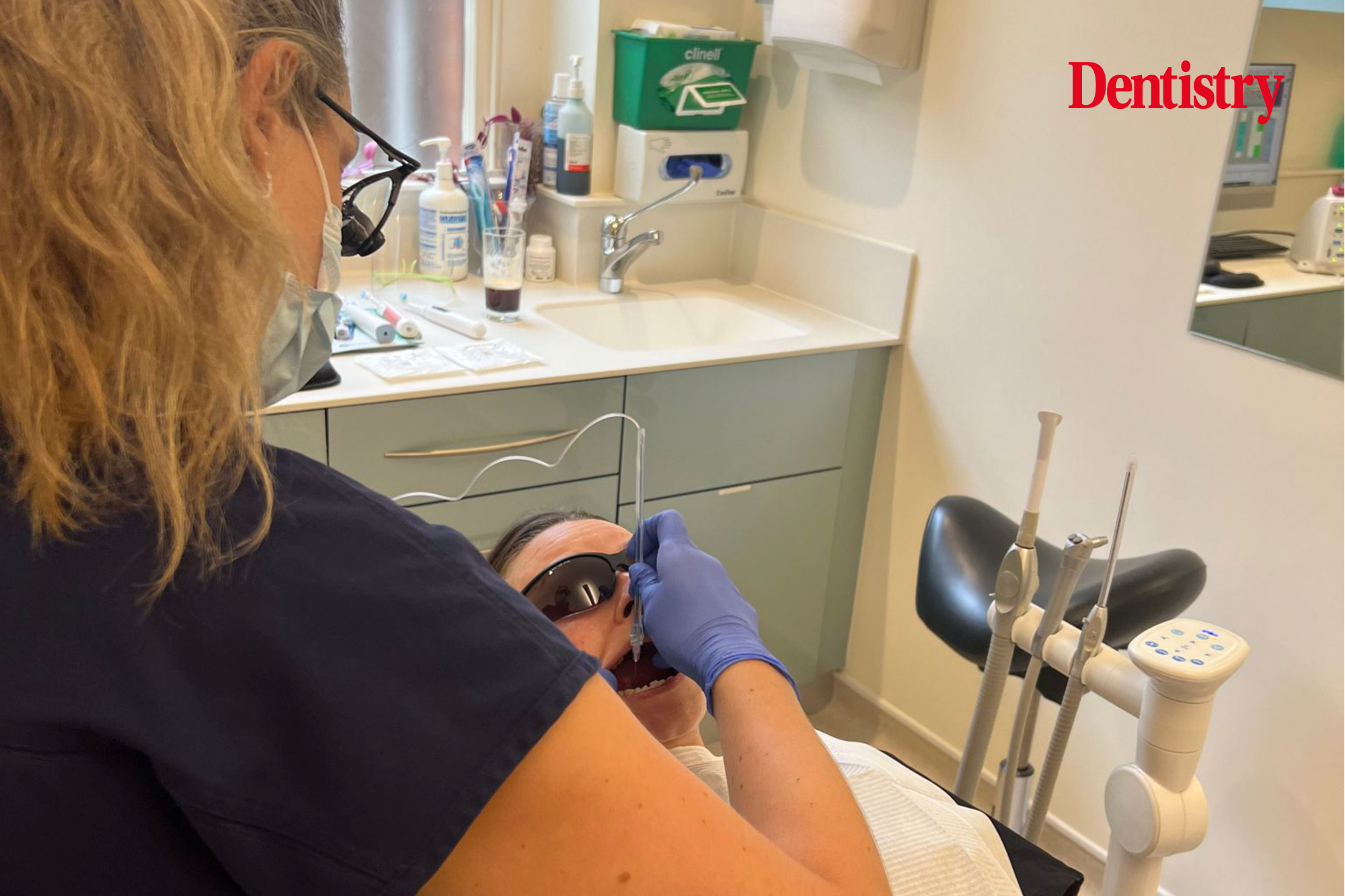
Lottie Manahan discusses how developments in technology can be used to help with periodontal treatment in anxious patients.
Periodontal patients often arrive in our chair not only nervous and anxious but embarrassed and uncomfortable, too. These emotions can manifest in their behaviours, so we need to be prepared to overcome any barriers to care that impact the patient’s health and our confidence in delivering optimum treatment.
The pandemic has increased dental anxiety amongst the most fearful (Kankaala et al, 2023). Caring for nervous patients with high needs comes with many challenges.
There is no quick fix when helping patients overcome their apprehension. But good communication, active listening and positive reinforcements are crucial. By reframing our approach – working with our patients rather than on their mouths – we can empower them with the confidence to trust us.
Establishing good rapport, delivering tailored education and offering reassurance all take time. How we make patients feel during an appointment is often the measure they use to judge us. Our objective should therefore be to deliver the best pain-free experience in the safest and most comfortable setting.
Consistent quality care
As dental professionals, whose focus it is to help prevent disease and protect the oral health status of our patients throughout their lifetimes, we should always aim for consistent quality care. Establishing recognisable and sustainable protocols by harnessing the best technology available to us demonstrates to patients that we are doing our best to support their needs and ensure optimum comfort.
This needs to be replicated at every appointment. Not just during the initial consultation where they may be at their most apprehensive.
Tim Newton is professor of psychology as applied to dentistry at King’s College London Faculty of Dentistry, Oral & Craniofacial Sciences. He notes: ‘People with dental phobia are most commonly given sedation to allow them to become relaxed enough to have dental treatment performed. However, this does not help them to overcome their fear in the long term.’ (Newton, 2020)
NHS England’s Clinical guide for dental anxiety management (NHS England, 2023) supports this thinking. Published in January 2023 (updated in May), it suggests that: ‘…accessing dental care is a life-long need, where long-term anxiety management approaches are required to support individuals in accessing dental care in primary care settings.’
The guide talks us through various approaches to helping anxious patients and lists rapport building, enhancement of the environment, treatment staging and longer appointment times (amongst other suggestions) as ways to ensure more confident patients. It is well worth a read.
Anaesthesia in periodontal treatment
The effective delivery of local anaesthesia is one of the most important aspects of dentistry. A clinician’s ability to administer an effective, safe and atraumatic local anaesthesia injection is a major factor in creating a patient with a lifelong acceptance of dental treatment (Thilak et al 2020).
Widely considered an important skill, the delivery of local anaesthesia is a vital component of any appointment involving periodontal treatment. Any technology that enhances the process is worth our consideration, especially if it removes stress triggers.
The Wand, which is available in the UK directly from Dental Sky, has gifted me opportunities to engage positively. It painlessly delivers a controlled single tooth injection that is often required when treating my high-need perio patients.
Its computer-controlled technology represents a significant improvement in how local anaesthetic is delivered, alleviating anxiety in patients who fear injections or are needle-phobic.
Case study
A patient recently presented with bad breath and significant periodontal disease. She had not visited the dentist for several years, resulting in widespread inflammation, soreness, and difficulty sitting still during treatment. To minimise her discomfort and enhance her sense of control, I introduced The Wand to deliver local anaesthesia.
The initial debridement session focused on reducing inflammation and addressing acute areas of discomfort. I used The Wand and, thanks to its small, non-intimidating design, it offered easy access to the oral cavity and target areas with little resistance from the patient.
Remarkably, she reported minimal sensation as the treatment progressed, even within deep periodontal pockets. This eliminated the need for traditional infiltration techniques or deeper anaesthetic blocks, contributing to a more pleasant experience.
Throughout the procedure, we maintained clear communication. Her comfort level was closely monitored and we discussed the use of ‘stop’ signals should she have required a break. The use of a stress ball and hand-holding with the dental nurse further reassured her, promoting a sense of control and reducing anxiety.
The Wand allowed for precise and efficient treatment of multiple sites, with the patient’s perception of pain significantly reduced. The absence of post-procedure numbness also contributed to her overall satisfaction.
She reported increased comfort and a decreased fear of invasive treatment. I was able to complete all four quadrants over a number of appointments.
Innovation in periodontal care
Patient-centred care in periodontal therapy is vital to our delivery of care. This technology helps to enhance patient comfort, promote open communication, and empowers the patient by providing a sense of control throughout the procedure.
Incorporating it into periodontal care can help to improve outcomes and encourage active participation in continued oral health maintenance.
I like to keep one eye on developments in dentistry, particularly if they elevate the dental experience for my patients, many of whom often comment on my love for ‘new gadgets’.
Innovation plays a pivotal role in the field of dentistry, and my patients value the fact that I stay well-informed about the latest techniques and equipment that are backed by scientific evidence.
For those of us on the frontline of oral health promotion and disease prevention, this translates to improved clinician-patient relationships and a happier experience in the chair for everyone concerned.
Dental Sky has a lot of really helpful information, including product downloads for different clinical studies, testimonials and video content. Please click here for details.


